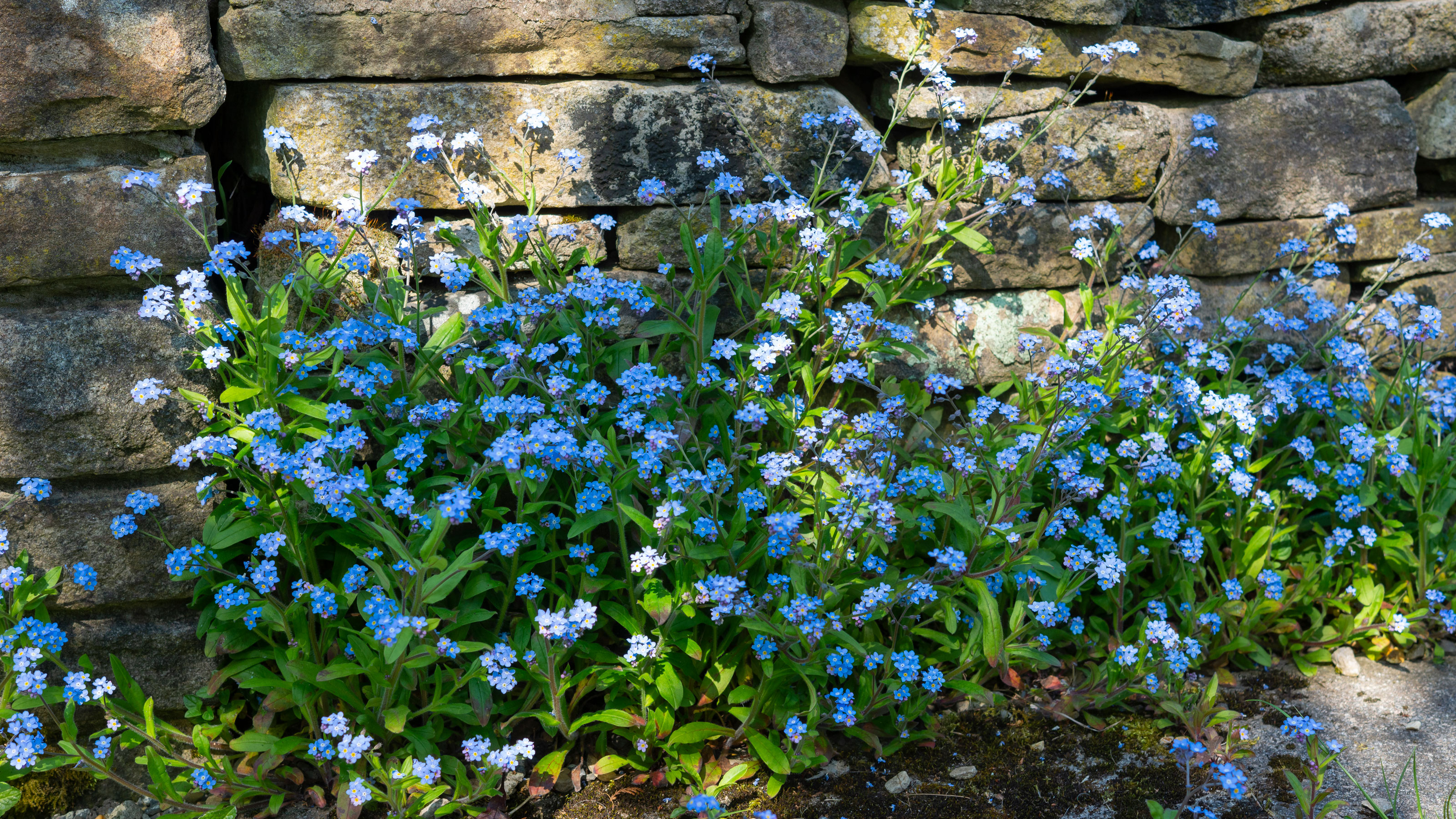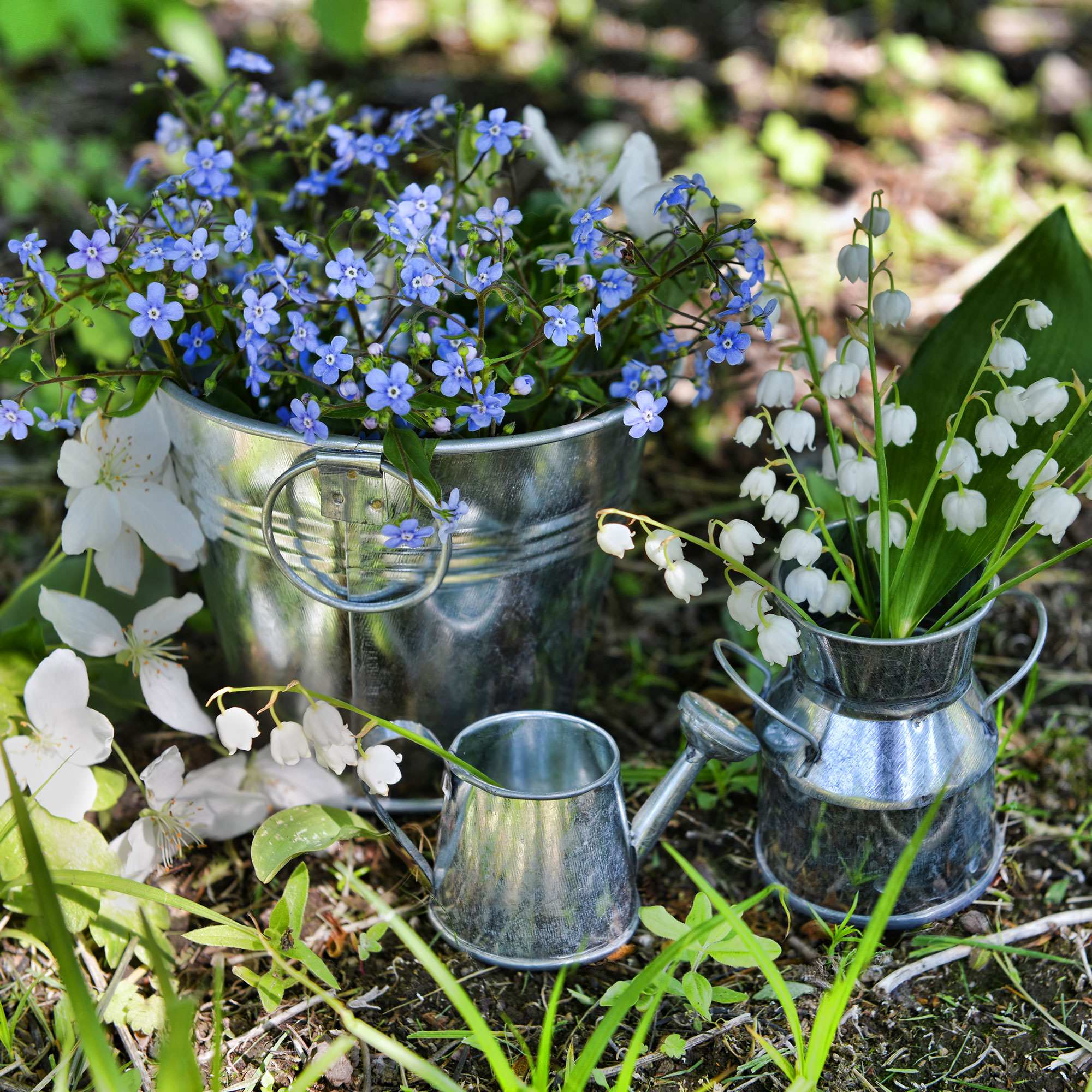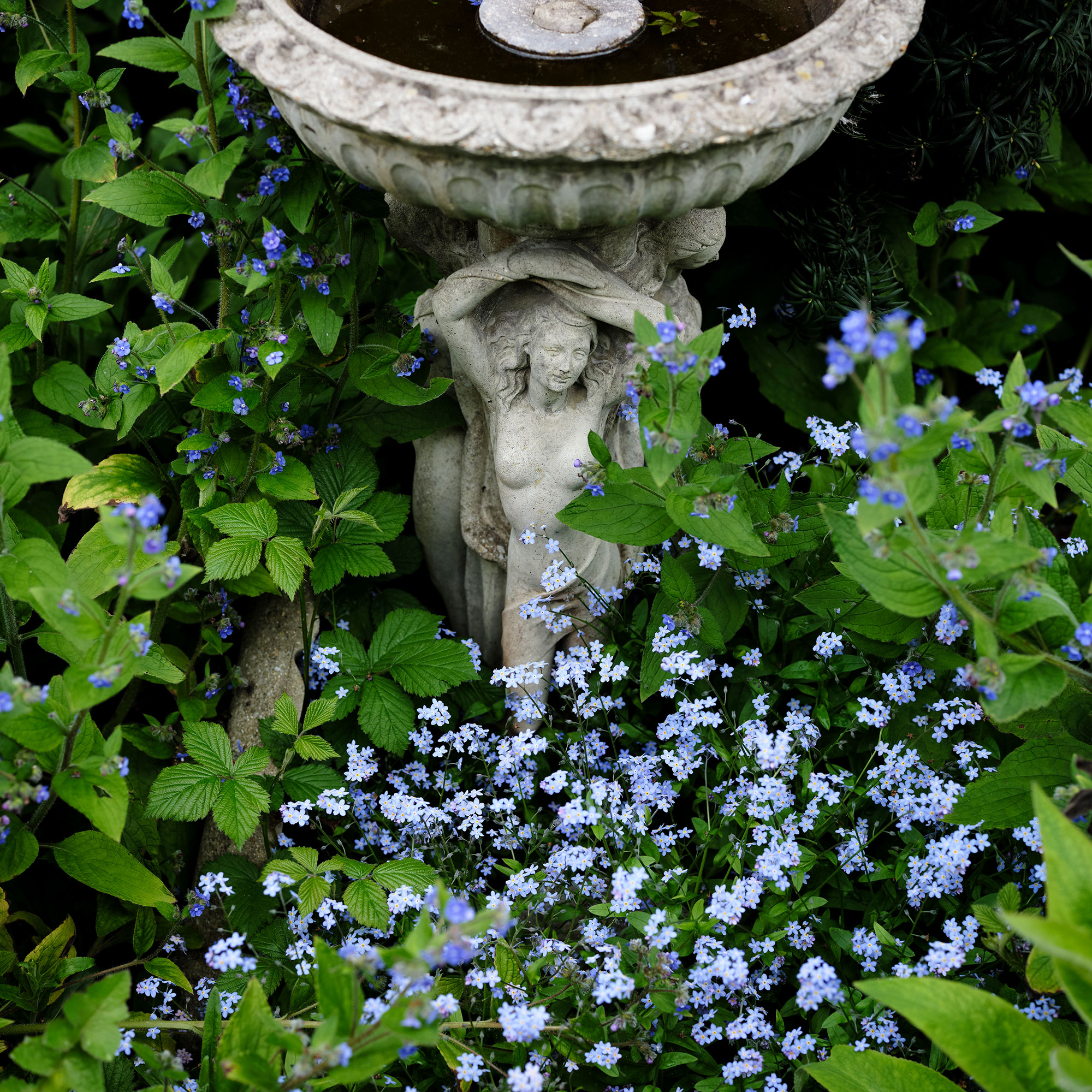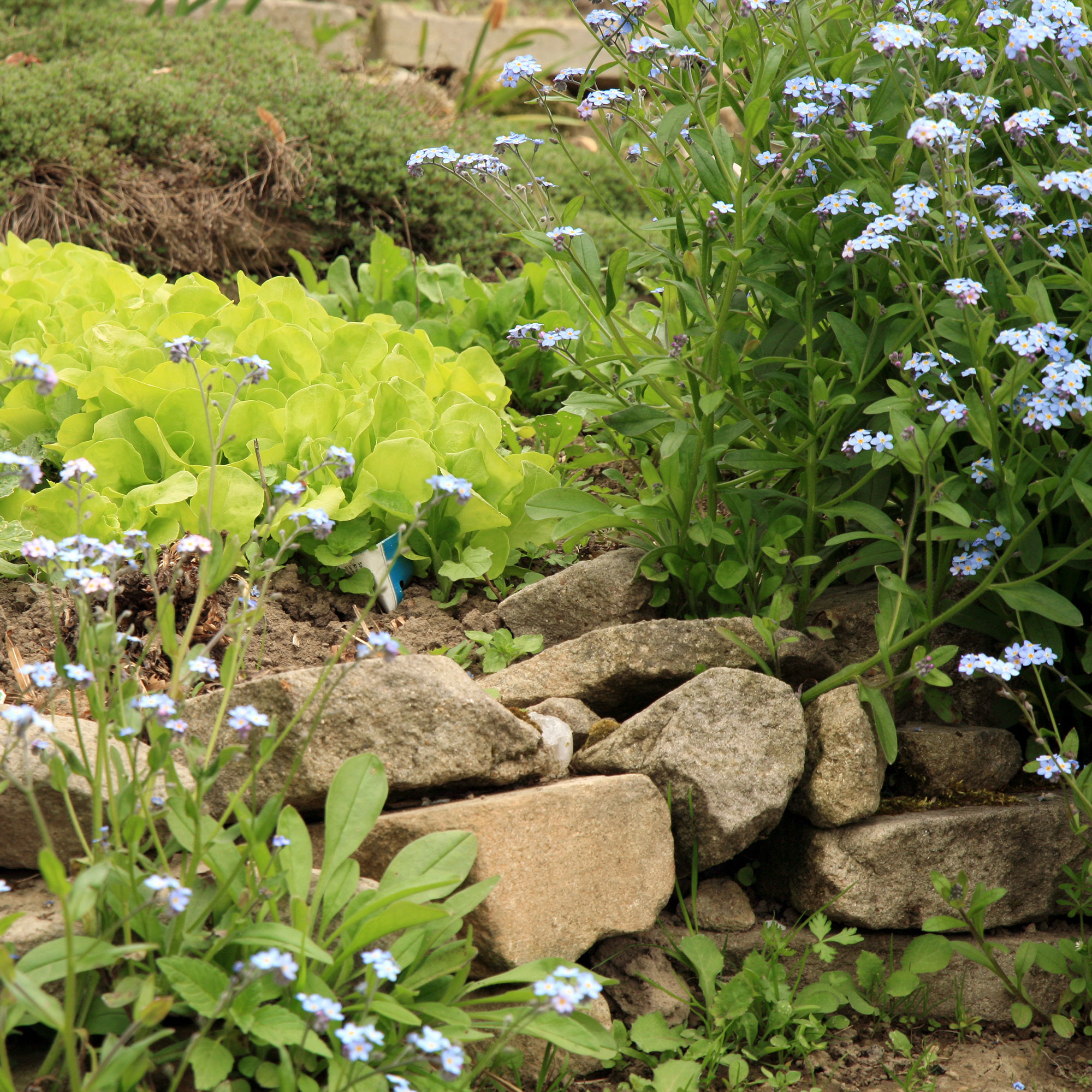When to sow forget-me-not seeds - the perfect time for planting in the ground or in containers
Fill your garden with beautiful blue hues


Forget-me-nots may be small, but they are mighty. A popular spring flower, they can brighten up any garden border, window box, or plant pot with their blue hues. But knowing when to sow forget-me-not seeds is key.
Stunning as standalone flowers or as a space-filler between bigger and more vibrant plants, forget-me-nots can help you bring any garden idea to life. In fact, they’re even key players in the erotic garden trend! But while these flowers are fairly winter-hardy and will generally survive the cold snap, to successfully sow forget-me-not seeds, you need the perfect temperature - and that can only be found at a specific time of the year.
That’s why we’ve consulted with garden experts to reveal when to sow forget-me-not seeds, no matter whether you’re sowing in the ground or sowing into containers. Stick to this rule, and you’ll be rewarded with a blooming garden next spring.
When to sow forget-me-not seeds
While sowing forget-me-not seeds directly in the ground is generally considered to be the best method for this task, you do have a little more flexibility with time if you choose to sow forget-me-not seeds in containers. So, check out the timeframes below and decide on the best course of action for you and your garden.

When to sow forget-me-not seeds in the ground
'Forget-me-nots are so named because when the tiny blue flowers are gifted to someone, they represent a promise that you will always keep them in your thoughts,' explains Morris Hankinson, director of Hopes Grove Nurseries.
But if you’re all about that self-care in 2024, why don’t you sow forget-me-nots in your own garden as a promise to always take care of yourself? To do this, sowing directly in the ground is best and should be done between May and June in preparation for next year’s spring blooming season.
And when you’ve successfully added forget-me-nots to your garden, you can rest easy knowing that they’ll be there until you choose otherwise. ‘This plucky little biennial will self-seed itself, spreading the love through your beds and borders,’ adds Morris.
Sign up to our newsletter for style inspiration, real homes, project and garden advice and shopping know-how
Of course, we can understand why you’d be eager to fill your garden with these beautiful blue flowers and why you'd want to get a headstart on your sowing session during the winter months. But it’s important to wait for the right time to sow forget-me-not seeds if you’re looking to plant directly in the ground.

Oliver Hill, gardening expert and founder of Garden List, explains, ‘January is usually too cold for the seeds to germinate effectively, as forget-me-nots prefer cooler, but not freezing, temperatures for germination. The risk of frost and cold weather in January, which we are already experiencing, can hinder seed germination and potentially damage young seedlings.’
When to sow forget-me-not seeds in containers
If you’re having a garden re-jig and don’t want to directly sow your forget-me-not seeds in the ground, you also have the option to sow forget-me-not seeds in containers.
This isn’t a necessary step, as these seeds thrive when planted in the ground. However, it is an option for those who prefer this method, and thankfully the timings are also similar - although you do have extra flexibility when sowing seeds in containers indoors.
The best months to sow forget-me-not seeds in containers are May, June and September, when the temperatures are warm but not too hot for the seeds. The process is also very easy and similar to how you would sow sweet peas from seed.
Oliver advises, ‘Use seed trays or small pots filled with a good quality seed compost. Sow the seeds thinly and cover lightly with compost. Place the trays or pots in a bright, warm location and keep the soil moist. Once the seedlings are large enough to handle and the risk of frost has passed, you can harden them off (gradually acclimate them to outdoor conditions) and transplant them outside.’

Keeping them warm during this time is key, which is why you should need to take extra precautions when sowing your forget-me-not seeds inside.
Steve Chilton, garden expert at LeisureBench says, ‘If you sow your seed inside, you'll need to place them on a sunny and warm windowsill, or in a heated propagator/greenhouse. They need to be warmed up in order for them to germinate properly, which is why sowing them between May and June when the temperature's just starting to heat up again is perfect.’
Then, once again, you can take advantage of the forget-me-not’s self-seeding nature to fill your garden.

Steve is a passionate and knowledgeable garden expert with several years of experience within the field and has developed strong expertise for all things nature and plants. Steve is a keen educator and loves to share this knowledge with others. He strives to simplify complex garden practices and encourage eco-friendly gardening.
FAQs
Is forget-me-not easy to grow from seed?
Yes! Forget-me-not seeds are extremely hardy and can successfully germinate even when planted directly into the ground. However, it’s important to note that you need to have patience when growing forget-me-nots from seeds.
Forget-me-nots require a fairly lengthy amount of time to germinate and establish themselves as viable plants. When the seeds are sown, you should expect your first bloom the following year.
Where is the best place to plant forget-me-nots?
Forget-me-nots aren’t too fussy when it comes to where they’re planted, as long as they have moist and well-draining soil and some shade to protect themselves during the height of the summer.
In fact, they can grow even if they don’t have sun, which makes forget-me-nots a great option for those who have a north-facing garden.
Although patience is key when it comes to sowing forget-me-not seeds, your patience will pay off in the end.

Lauren Bradbury has been the Content Editor for the House Manual section since January 2025 but worked with the team as a freelancer for a year and a half before that. She graduated with a Bachelor’s degree in English and Creative Writing from the University of Chichester in 2016. Then, she dipped her toe into the world of content writing, primarily focusing on home content. After years of agency work, she decided to take the plunge and become a full-time freelancer for online publications, including Real Homes and Ideal Home, before taking on this permanent role. Now, she spends her days searching for the best decluttering and cleaning hacks and creating handy how-to guides for homeowners and renters alike, as well as testing vacuums as part of her role as the Ideal Home Certified Expert in Training on Vacuums, having spent over 110 hours testing different vacuum models to date!